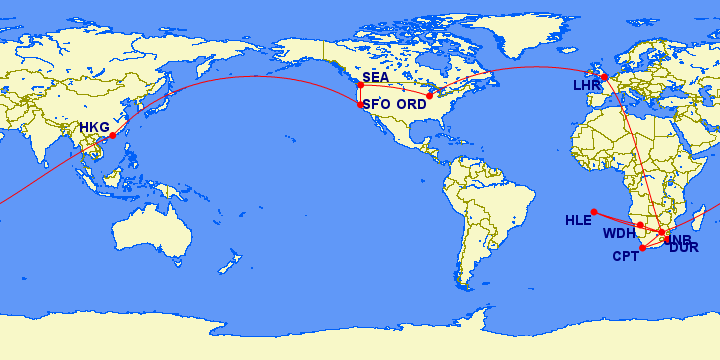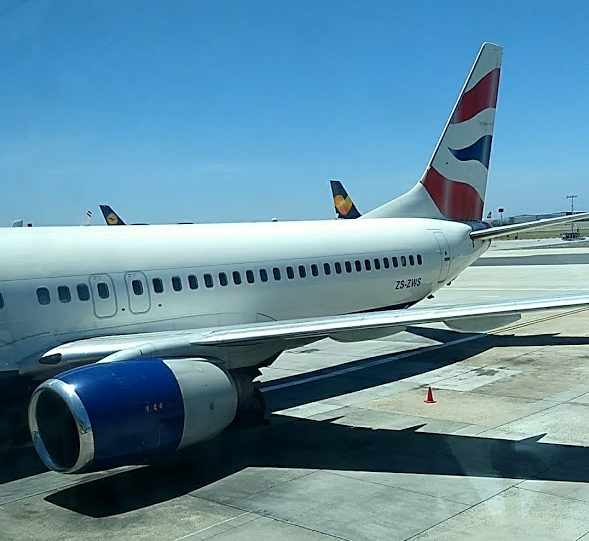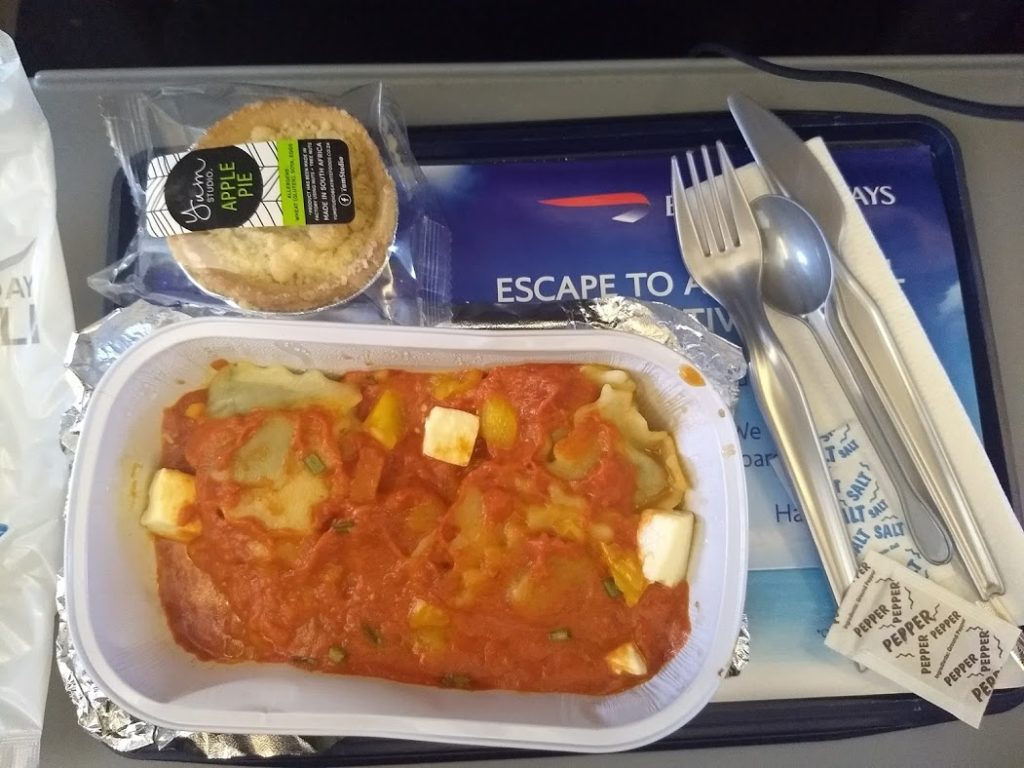Yes, you’re still reading Seat 31B. If you’re a regular reader of this blog, you know I mostly write about travel to unconventional places via unconventional routes, and about squeezing the maximum value out of your points (in terms of money you would have actually spent). You’re a lot more likely to read a review of an economy class flight to Ecuador on the worst seat in a regional jet here than you are to read about Cathay Pacific First Class.
And yet, the latter is exactly what I booked as part of the round-the-world trip I just completed. I’ll be writing a lot about South Africa and St. Helena over the next week or so but the elephant in the room is the long-haul flights. They were all booked in premium cabins and this is fairly uncharacteristic for me so I figured I’d write a post about why I spent my miles this way, and why in this specific case I think it made sense for me, given my personal situation and the opportunities I had. I will also write two “deep dive” articles about the mechanics and economics of booking these flights.
The Flights
Getting to St. Helena requires starting from Johannesburg (you can also buy tickets to and from Cape Town, but these currently connect through Johannesburg). It’s a really unique flight in a lot of ways, the operations and marketing are very strange, and that’s an entire article in and of itself but these tickets are only sold ex-South Africa. The largest number of international flights into South Africa (by far) land in Johannesburg, although there are also international flights to Durban and Cape Town. I ultimately decided to book the outbound to St. Helena from Johannesburg and return to Cape Town, both because it was cheaper and because I wanted to visit Cape Town.
So, this meant that I had to get to Johannesburg, one of the most difficult destinations in the world to reach using miles and points. And making matters worse, I had decided almost at the last minute that I was going to take the trip. This is because unexpectedly, due to a threatened lawsuit, business in my company ground to a halt. This wasn’t something that was going to be resolved quickly. The tech industry more or less shuts down from the middle of December through the middle of January (people take off for Christmas and then it’s CES, so nobody really gets back to work until the 15th). So, I found out a week before Christmas that I was going to have about 3 weeks free. I booked everything starting just 8 days beforehand.
Of course, this wasn’t easy. At all. I was looking to fly over the holidays (or “festive season” as they call it in South Africa and St. Helena) when flights are absolutely packed. However, you can sometimes score last minute seats, especially when you only need a single seat. This is because airlines will give away unsold seats to frequent fliers at the last minute, and they will also generally return last minute cancelled seats to inventory.
You don’t always have to book award flights 330 days in advance
The conventional wisdom when it comes to booking award travel is that you need to start 330 days in advance when the booking calendar opens. Like most conventional wisdom there is some truth to it, but it isn’t the only truth. The reality in the current state of the industry is that revenue management systems at many airlines regularly evaluate seat inventory and make seats available to frequent fliers based on anticipated revenue load.
This means that, with many airlines, you have multiple opportunities to score an award seat. Consider a flight where five business class seats were made available for awards. The airline might initially make two seats available 330 days in advance. However, they might open up another two seats 20 days before departure (allowing the seat to be booked, but allowing themselves to collect a close-in booking fee). Another seat might open up 3 days before departure if it has remained unsold, with the final seat made available on the day of departure. People also sometimes need to cancel their flights at the last minute. There is an influenza epidemic this winter. Someone else’s flu misery might be your travel opportunity, because most airlines will put award seats that were cancelled up for grabs.
This is what saved me. I was able to book the whole thing using the mileage currencies I wanted thanks to last-minute inventory becoming available. What was available to book? A mix of the world’s most aspirational and least aspirational first and business class products. In the end, it cost me under $300 in cash to literally travel all the way around the world, in premium cabins, on all but one leg of my journey. If I’d paid cash, this would have cost over $30,000. And if I’d bought a discounted business class fare, it would still have cost me about $7,000.
Why I Booked In Premium Cabins
I normally fly in economy class and look for “sweet spots” on award charts to travel the maximum distance and squeeze the maximum value out of the fewest number of points. However, I consider Africa to be a “sour spot” destination in economy class. Depending on the award program you use, it can cost 50,000 points in economy class for a one-way trip to Africa. And South Africa is really far away. From Seattle, it’s 14,237 miles when routing via Asia.
Meanwhile, the price in a premium cabin to Africa is–depending on the program you are using–almost the same cost as a trip to Europe or Asia. It’s about twice as far, making the value of a lie-flat seat considerably more valuable; however, unlike in economy class, this doesn’t actually cost any (or much) more. It takes a solid 27 hours (or more) of flying to get to South Africa, so this is one of the few places in the world where the upgrade is truly worth the extra miles.
Wrap-Up
I was able to book my trip during absolutely peak travel periods, to one of the most difficult to book award travel destinations, and do it all without paying fuel surcharges. And I was able to redeem the points that are, in practice, the most difficult to redeem for this destination and the most at risk of devaluing. The way that I was able to accomplish this was by being flexible and using multiple points currencies. Award travel booking is part art and part science. I think this was a great redemption, and an amazing trip!



